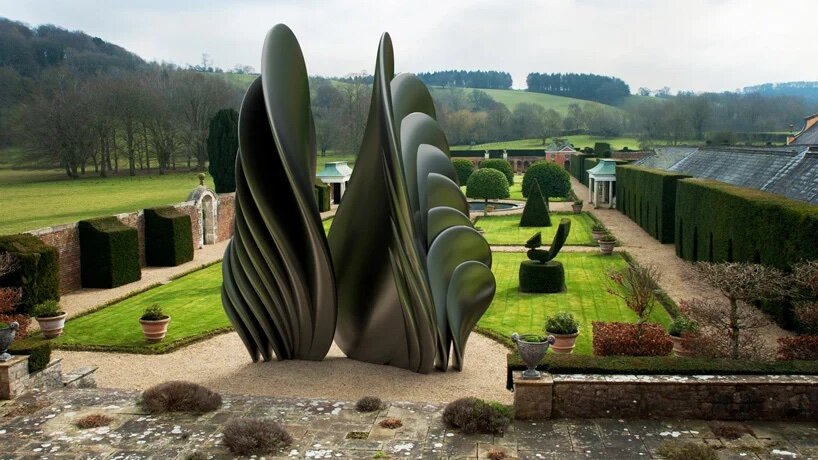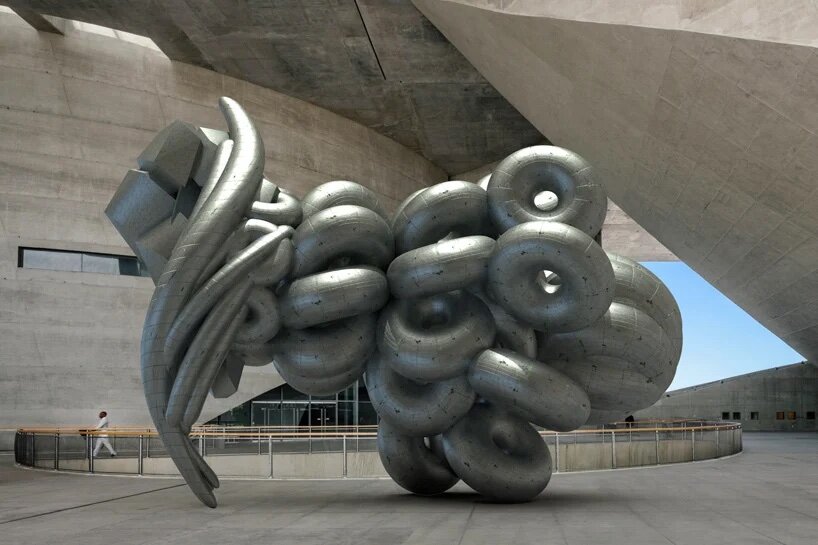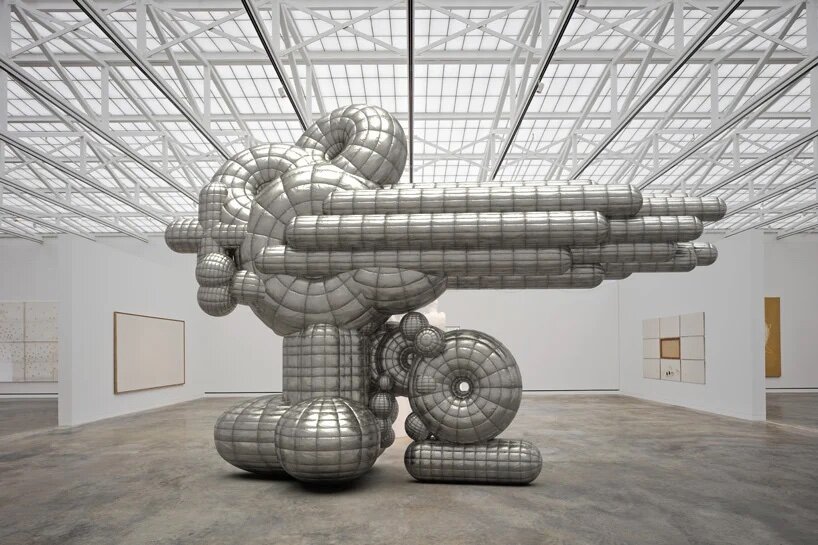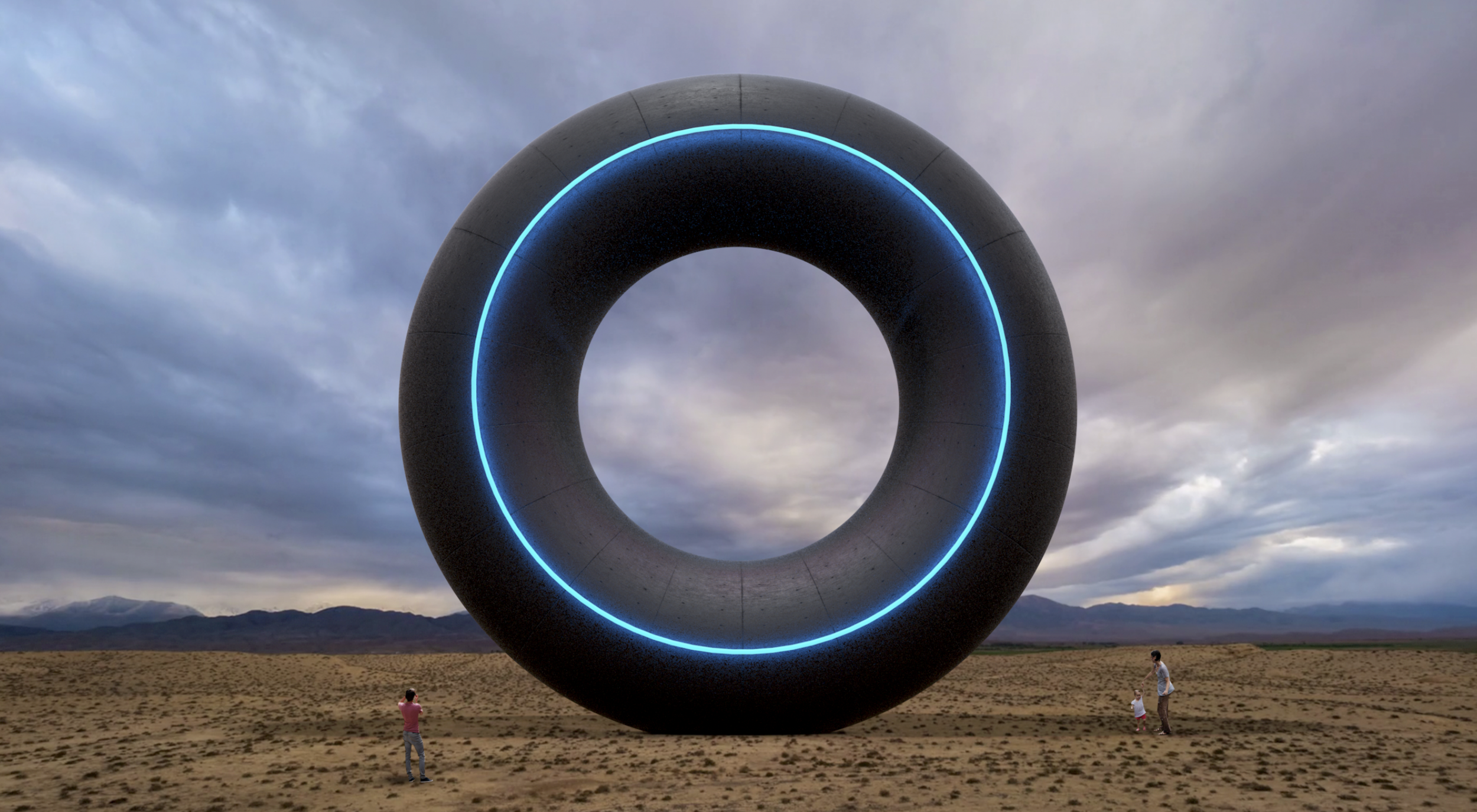Ken Kelleher | Space pleasure creator virtual 3D sculpture artist
An artist once said, "sculpture is a journey that makes curiosity visible". Sculptors create amazing works of art through imagination, as does Ken Kelleher, a 3D sculpture artist from the United States.
Twenty years ago, he worked in sculpture design and advertising. Ken Kelleher, who was full of creativity, became a sculpture designer again many years later because of his love for sculpture art. The difference is that he created a "sculpture Empire" in the form of 3D visual presentation.
Now Ken Kelleher lives with his wife and tells us about his life experience. He joked that he was a "poor artist" when he was young, but he has a new persistence and start because of his family responsibility. He told us that he likes to create all new things, all things that have never existed in the world. He likes the whimsical in the creative process and the sense of joy and achievement after creation. Compared with utilitarianism, these are the most meaningful and valuable to him.
He regarded art as a way to stimulate thinking, dialogue and reflection. This dialogue between the foundation and Ken Kelleher, let's explore the mysterious essence of things through his sculpture works.
“Whether the work is large scale, or a smaller more intimate piece, my work is about placemaking, creating work that responds to the space around it and creating delight.”
Q1:
what the opportunity was for you to change your career?
“So 6 or 7 years ago my wife and I bought a farm - and amazingly it came with a very large steel outbuilding I could use to start making sculpture again, which was my life long dream to get back into.
After college I had worked for several artists, including a foundry where we did smaller bronze works for Anthony Caro and larger pieces for William Tucker, near Caro’s studio in Hudson NY. At the time I fit the model of the ’starving artist’. I also travelled for a year. After I got married I knew I had to make a better living so I ended up taking some classes in programming and digital design so I could find a job doing branding work. That turned into a career which I still do.
A few years ago I was trying to teach myself 3d and getting frustrated. A friend of mine Justin Puda, a motion and 3d designer from San Diego, offered to teach me on Slack. As soon as I learned to render I was hooked. I saw it as a way to explore immediate ideas for sculptures at all scales, and in any environment, and not be limited by my own studio space, galleries or capabilities. I began rendering daily. Images of different spaces inspired me as often times architects don’t consider art or sculpture and the potential for interaction with the spaces around or in their buildings. To me it became a great starting point.”
Q2:
What prompted you to want to have this spiritual conversation with your audience?
“I have always been what I call a seeker. In my teens I was often asking the question ‘why’ and very surprised to find out most people didn’t ask the question. Why are we here? Why do we have this life? Why are we on this planet traveling through this solar system? A lot of times people just take things for granted. Pretty much every aspect of our existence is profound if you begin to think about it. To me sculptures are a way to explore mysterious things like form, energy, creation, substance, reflection. By using these objects to interrupt the path or train of thought of people who are carrying on with say their daily business or life, the sculpture makes these inquiries on my behalf.”
Q3:
How do you build the relationship between the sculpture and the space?
“The places and environments are triggers to me as to what I can create. What would look beautiful there? What types of interactions are possible? How can I inspire awe? What can I reflect back to people?
I think we have many spaces around us in cities and other places that aren’t considered, or left empty. Cities like Boston will bring in architecture firms and developers and do 100 million dollar deals for projects, and literally allocate nothing to creating art in the environments these structures create. Some places do have percent for art programs. But I think if you are an architecture firm or developer and you are making a 100 million dollar development, give something back in the form of art or sculpture. Your building may be amazing, but also bring in the artists to inspire and create. In a world driven by making money and progress, we often neglect the imagination and awe.”
Q4:
Do you think digital virtual sculpture is a utopia in concept and construction?
“I think virtual sculpture to me is a way to explore possibilities. Some pieces yes can be utopian and because of scale or other aspects will never exits in real life. But, I think the possibilities afforded to us to make much better, thought provoking sculpture exist, and given the means of production, and the potential we have to make these pieces, we can invest in making many of them real.”
Q5:
How do you think to break down the barrier or boundary between virtual art and tangible art?
“Whenever I make virtual pieces I’m exploring them as potential real pieces and often consider the teams and approaches I would use to bring them to life. In that way I try not to limit myself to certain materials or forms necessarily.
For me pushing the boundaries in both virtual and tangible is inspiring and is what drives me and my desire to explore.”
Q6:
What do you think are the advantages and characteristics of digital sculpture?
“The freedom to make without standard or typical limitations. If you don’t let the typical limits hold you back you can explore at will. If it come time to make the work partner with the best fabrication teams until you are able to make your own team.”
Q7:
How was this thought about pleasure born in the early days of your creation?
“Papillon to me is like a butterfly and cocoon represented in the same form. The caterpillar has to have a lot of strength for this transformation, but at the same time it is effortless because it is part of its destiny and DNA.
I like making work and leaving it open to interpretation in the viewer. I never really know how people will take a work and how it may effect them or what it is they will think about it. I was very pleased to realize this piece in bronze for a bank lobby in Doha. The thing that is amazing is once the piece is ‘born’ so to speak, and put into the world, it takes on a life of its own.”
Q8:
In the future, which areas do you still want to try?
“I want to continue to make many many more sculptures and see them realized. :)”









